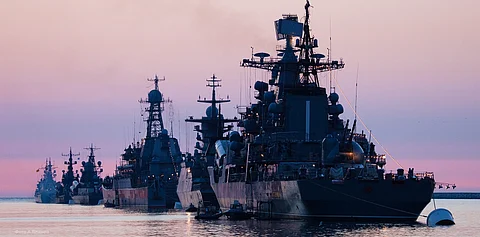

Russian naval and border guard vessels have begun escorting cargo ships departing Russian ports through the Gulf of Finland, amid rising maritime tensions in the Baltic Sea.
Finland’s Defense Minister Antti Häkkänen confirmed on Monday that Russian forces are now accompanying tankers associated with what Western officials term the "shadow fleet"—a group of vessels allegedly used by Moscow to circumvent sanctions.
“These tankers often operate without insurance issued by London-based firms,” Häkkänen noted, referencing Western concerns that these ships help Russia maintain oil exports outside the sanctions regime imposed following its invasion of Ukraine.
The decision to begin escorts follows a May 14 incident in which the Estonian Navy attempted to intercept the JAGUAR, a Gabon-flagged oil tanker en route to the Russian port of Primorsk. A Russian Air Force Su-35 fighter jet was reportedly dispatched to the area and accompanied the vessel back into Russian territorial waters. During the confrontation, a Polish Air Force MiG-29 was also deployed, underscoring the rising risk of direct military encounters in the region.
The standoff came weeks after Estonia detained another vessel, the KIWLA, alleging it was part of the shadow fleet. In response, Russian authorities briefly detained a commercial vessel traveling from Estonia in Russian waters before releasing it—further escalating tensions.
Estonian and Finnish officials have previously suggested the possibility of blocking Russian shipping access to the Baltic Sea, a move that Moscow has warned would trigger a severe response.
In January, NATO launched Operation Baltic Sentinel, an initiative officially aimed at protecting undersea infrastructure in the region. However, analysts say the operation also functions as a deterrent—or even a potential mechanism—for disrupting Russian maritime trade.
In response to growing obstacles in the Baltic, Russia is accelerating development of its North-South Trade Corridor, a strategic overland and maritime route designed to connect St. Petersburg with India via the Caspian Sea, Iran, and the Caucasus. Once operational, the corridor would allow Russia to bypass the Baltic entirely, reducing its reliance on NATO-dominated waters.